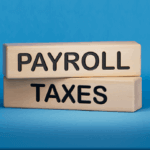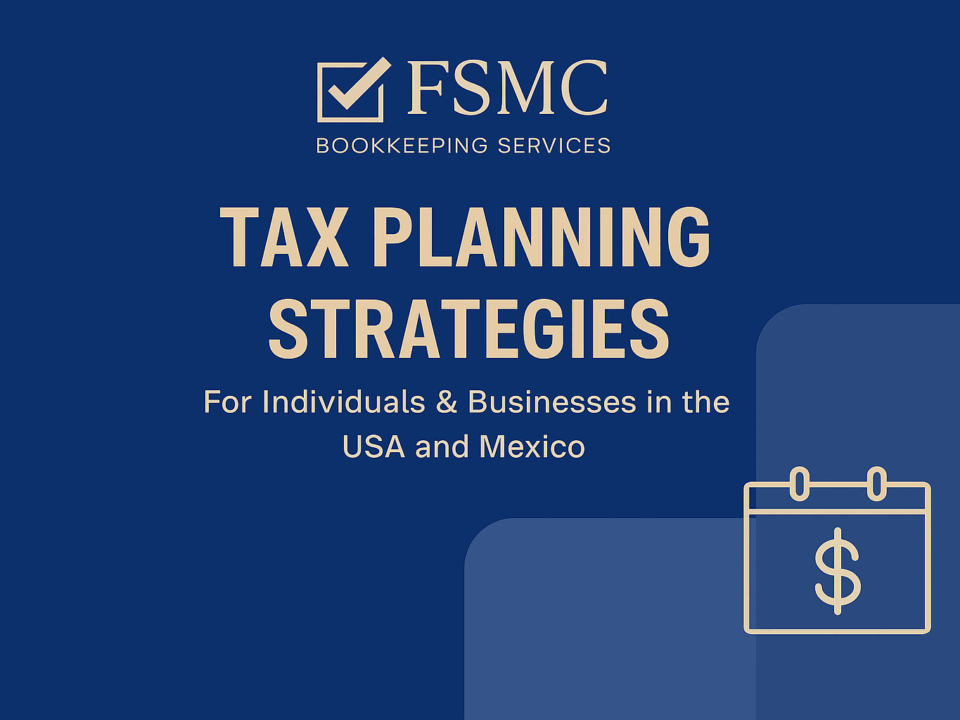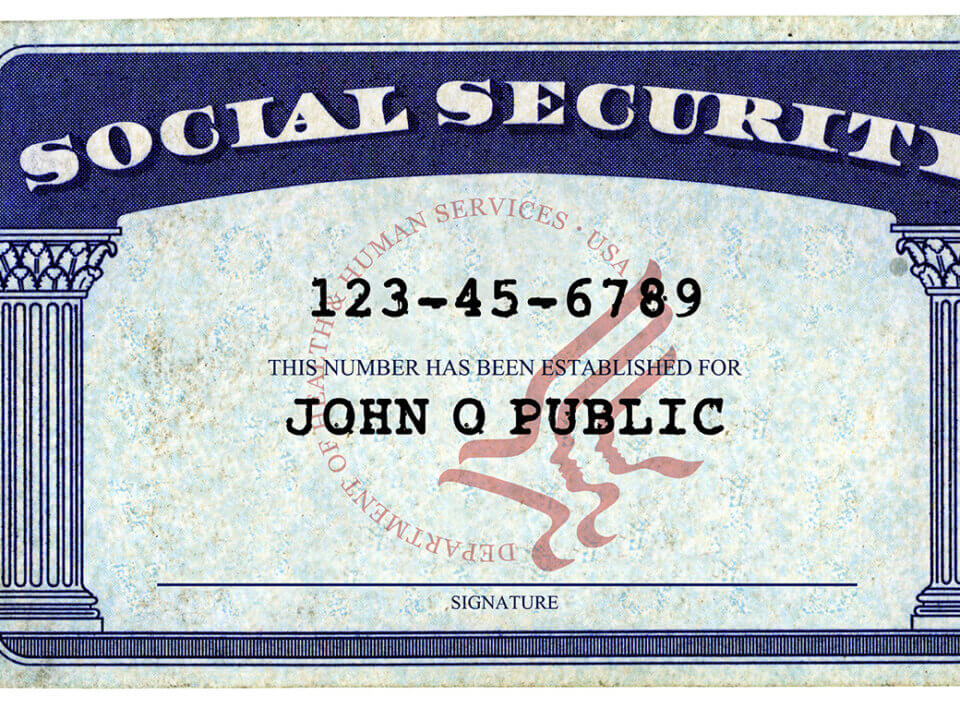
Understanding Estimated Taxes
June 1, 2025
Payroll Tax: A Guide for Employers
June 1, 2025💵 Tips for Managing Cash Flow in Slow Seasons
Keep Your Business Afloat Year-Round
Running a business isn’t always smooth sailing—especially when slow seasons hit. Whether you’re in retail, hospitality, consulting, or a seasonal service, you’re bound to face months where cash flow dips, sales slow down, and expenses don’t. 😬
But here’s the truth: slow seasons don’t have to sink your business. With proper planning, savvy strategies, and expert support, you can manage your cash flow, weather downturns, and come out stronger on the other side. 💪
In this blog, we’ll explore:
-
✅ What cash flow challenges look like in slow seasons
-
💡 Best practices to manage and prepare for seasonal dips
-
🛠️ What to do when cash flow isn’t enough
-
💳 Alternatives for financing or support
-
🙌 Why FSMC Bookkeeping Service is your best ally
🧾 What Is Cash Flow—and Why It’s Crucial
Cash flow is the movement of money in and out of your business. Positive cash flow means you have more coming in than going out. Negative cash flow? You’re spending more than you earn.
In slow seasons, expenses don’t stop—rent, payroll, inventory, and utilities keep rolling in. Without strong cash flow management, these periods can lead to debt, stress, and in worst cases, business closure. 😰
🌦️ The Reality of Seasonal Slumps
Some industries naturally experience seasonal fluctuations:
-
🏖️ Tourism and hospitality (off-season travel dips)
-
🎁 Retail (post-holiday slowdowns)
-
🏠 Landscaping or construction (winter downtime)
-
📚 Education services (summer slowdowns)
Even B2B businesses may feel the squeeze during summer holidays or year-end budget freezes.
The key is to plan in abundance for the times of scarcity.
💡 Best Practices for Managing Cash Flow in Slow Seasons
Here are proven strategies to help you stay financially stable even when business slows down.
✅ 1. Know Your Seasonal Trends
Before you can plan, you need to analyze your data.
-
Review at least 2–3 years of financial history
-
Identify patterns in revenue and expenses
-
Use this to forecast slow periods in advance
📈 Tools like FSMC Bookkeeping can provide visual cash flow reports to help spot trends quickly.
✅ 2. Create a Cash Flow Forecast
A 12-month rolling cash flow forecast helps you:
-
Anticipate shortfalls before they happen
-
Time your expenses and investments
-
Avoid last-minute financial scrambles
🧮 Update this monthly for accuracy and use it to make data-driven decisions.
✅ 3. Build a Cash Reserve (aka Emergency Fund)
Set aside surplus cash during busy months to cover at least 2–3 months of expenses during slower times.
-
Treat this like a “rainy day” fund
-
Store it in a separate high-yield business savings account
-
Replenish it during high-revenue seasons
💡 Think of it as business insurance—peace of mind in a crisis.
✅ 4. Cut or Delay Non-Essential Expenses
In a slow period, every dollar counts. Review your operating costs and:
-
Eliminate unused software or subscriptions
-
Pause marketing campaigns that aren’t delivering ROI
-
Delay hiring or large purchases
-
Negotiate with vendors for flexible terms
📉 Keep fixed costs lean so slow months don’t break your bank.
✅ 5. Diversify Your Income Streams
Don’t rely on one product or service. Explore alternative revenue channels that perform better during slow periods:
-
Offer seasonal services or packages
-
Launch digital products (courses, ebooks, templates)
-
Add affiliate partnerships or drop-shipping options
-
Introduce prepaid service bundles
🔁 Recurring revenue models help flatten the peaks and valleys in cash flow.
✅ 6. Encourage Early Payments
To speed up incoming cash:
-
Offer discounts for early invoice payments
-
Shorten your payment terms (Net 15 vs Net 30)
-
Invoice immediately upon delivery of goods/services
-
Follow up on unpaid invoices consistently
💌 Use automated reminders to nudge clients without manual chasing.
✅ 7. Use Credit Strategically (But Cautiously)
A business credit card or line of credit can help you manage cash gaps if used wisely:
-
Pay off balances quickly to avoid interest
-
Use only for essential operational costs
-
Avoid using credit to fund long-term losses
⚠️ Avoid relying too heavily on debt—it should be a bridge, not a crutch.
❌ What to Do When Cash Flow Isn’t Enough
Even with planning, there may be times when cash on hand just isn’t enough. Here’s what you can do:
🧾 1. Review and Reduce Your Burn Rate
The burn rate is how fast you’re using your cash reserves. If your inflow is low, trim expenses immediately to buy time.
-
Freeze unnecessary spending
-
Switch to more affordable vendors
-
Consider remote work to cut utilities or rent
💳 2. Negotiate With Vendors or Lenders
Many vendors are willing to work with you if you communicate early.
-
Ask for extended payment terms
-
Renegotiate due dates or partial payments
-
Look into deferment options for loans or leases
🤝 Honesty and proactiveness go a long way in maintaining relationships and cash.
📦 3. Liquidate Unused Inventory or Assets
Turn non-performing assets into cash:
-
Sell excess inventory at a discount
-
Lease or sell unused equipment
-
Sublet office space temporarily
🔄 It’s better to have cash in hand than idle inventory on shelves.
🧠 4. Consider Financing Options
When cash flow dips below critical levels, financing can provide a lifeline:
💼 Business Line of Credit
Draw what you need, when you need it—repay as revenue returns.
💳 Small Business Credit Card
Short-term coverage for immediate purchases. Ideal for essential transactions only.
🏦 SBA Microloan
Low-interest loans (up to $50K) for small business use, including working capital.
👥 Invoice Factoring
Sell your unpaid invoices to a third party for immediate cash—great if you have outstanding receivables.
⚠️ Always understand terms, interest rates, and fees before committing.
🧠 BONUS TIP: Plan Promotions During Slow Seasons
You don’t have to wait out a slump—get proactive:
-
Run off-season promotions or sales
-
Offer referral bonuses to loyal customers
-
Host webinars or free workshops to attract new leads
-
Reconnect with past clients or customers
📣 Keep your brand active—even when business is slow.
🙌 Let FSMC Bookkeeping Service Help You Stay Cash-Flow Positive
Staying on top of your cash flow takes time, organization, and financial know-how. That’s where FSMC Bookkeeping Service comes in.
Why Choose FSMC?
✅ Customized cash flow tracking and forecasting
✅ Expert insights on seasonal financial planning
✅ Alerts for potential shortfalls and overspending
✅ Monthly reporting that makes decision-making easy
✅ Professional bookkeeping at an affordable price
✅ Peace of mind—so you can sleep at night 😴
💬 “With FSMC handling my books, I know exactly where my cash stands—and what to do next.” – Serge M.
Whether you’re bracing for your next slow season or trying to recover from the last one, FSMC gives you the tools, guidance, and support to keep your cash flowing and your business growing.
Download our complementary Cash Flow Survival Checklist here
💼 Final Thoughts
Slow seasons are part of the journey—but running out of cash doesn’t have to be. With the right planning, strategic decisions, and expert help, you can stay financially strong, even when business slows down.
Start preparing now, protect your cash, and consider partnering with FSMC Bookkeeping Service to handle the numbers—so you can focus on the business you love. ❤️
#CashFlowManagement #SlowSeasonStrategy #SmallBusinessTips #BookkeepingHelp #FSMCBookkeeping #SurviveAndThrive #SeasonalBusiness #BusinessFinance #EntrepreneurSupport #CashIsKing #BusinessPlanning 💰📊📆




